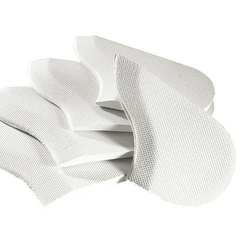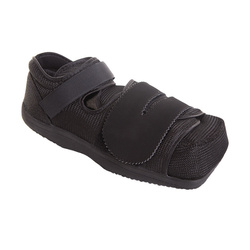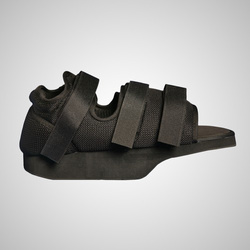Walking boots
( number of products: 21 )Whether you’ve just had an operation of the foot, ankle or lower leg, a walking boot may be recommended by your doctor or specialist. However, before deciding on the right one for yourself, read on to learn about it’s uses and which model would best suit your condition.
Walking boots and their uses
Postoperative foot and ankle walking boots are specialized medical equipment, and as such, they must be recommended only by a specialist who accurately knows the patient’s condition. This specialist decides on which model walking brace is best-suited for treating a certain condition. This type of foot support is designed to expedite the postoperative recovery recovery process, no matter at which stage - both immediately after the procedure and also during later phases of the recovery process.
But which procedures require the patient to wear a walking boot? Primarily those involving the entire foot, including the toes, heels and operations of the hallux, which require the patient to wear specialized walking boots.
In addition, a walking boot will be recommended after the patient has undergone treatment of fractures in the foot and talus. Walking braces may also be used for treating tendon injuries, inflammation, damaged ligaments, ankle sprains, and are recommended for patients who have undergone surgery of soft tissues and tendons, as well as reconstructions of the lower leg.
In turn, walking boots or walker braces, are considered professional rehabilitative equipment often used after surgery, as well as for treating foot instability and metatarsal fractures.
How do postoperative walking boots function?
In most cases, a walking boot is used to immobilize the foot during the postoperative recovery period, in order to avoid damaging the operated area. This is extremely important both during the day and night. Walking braces keep the foot in one position, preventing it from rotating, which would damage the recently operated tissues. They help to reduce severe ankle and lower leg pain by keeping the foot in the correct physiological position, which prevents accidental compressions on the nerves or muscles.
Certain models, such as the hallux walking boot, can be worn immediately after surgery, as well as during later stages of the rehabilitative process. This model has a specially designed rocker sole that reduces foot and ankle pain, and makes walking more comfortable and without having to rely on additional aids. Additionally, postoperative hallux walking boots have a lining that adapts to the shape of the foot and prevents the toe from sliding into the wrong position. A well-chosen model will also help to reduce swelling of the foot and ankle.
How to choose the right walking boot?
Every walking brace available from our catalogue should be used in accordance with medical recommendations provided by your doctor. Postoperative hallux boots must be fitted by an orthopedist or podologist, in order for the footwear to fulfil its purpose.
The walking braces should properly fit your foot size and shape without causing any discomfort. Usually, postoperative shoes are available in a universal or customized variant for either the left or right foot. Every model is made of certified materials that ensure proper hygiene and comfort of use.
If you have recently undergone hallux valgus treatment, the Bledsoe Bunion Boot would be ideal for helping you to recover, as this product is recommended for protecting the entire foot, immediately after the procedure. As for later-stage recovery foot braces, there's the BORT Valco® Hallux Valgus-Schiene. No matter which model you choose, you can expect a quick and comfortable recovery with the help of our medical footwear.

Airstep walker wedges - Achilles injury support Orthoservice
- 1
- 2



















